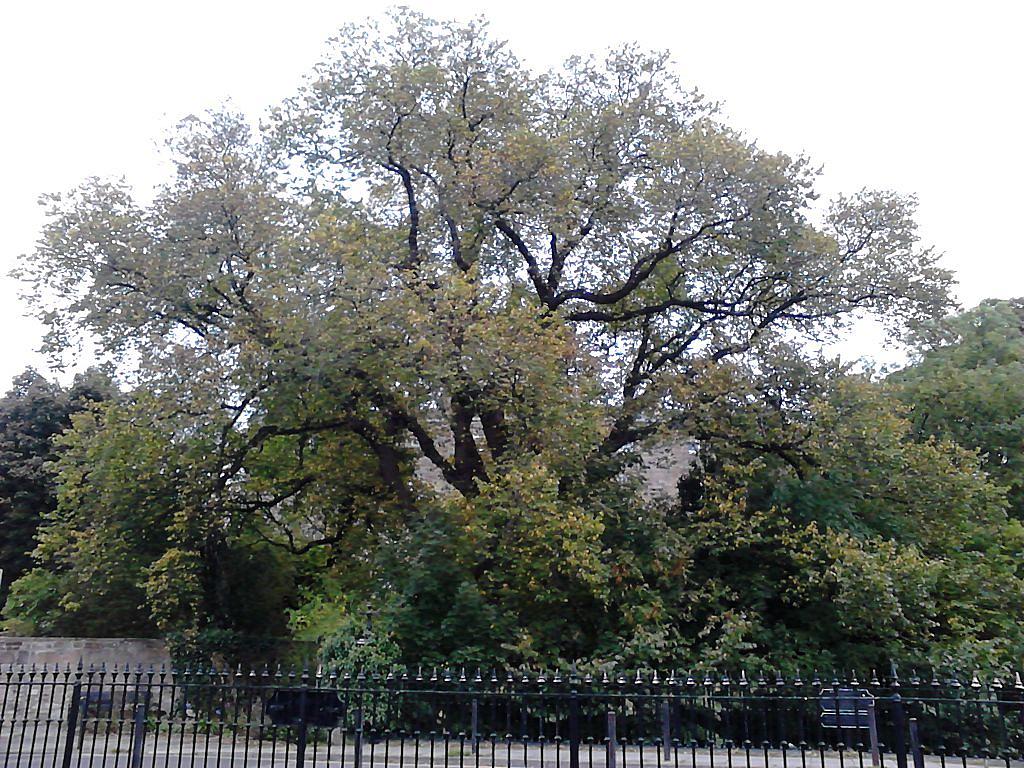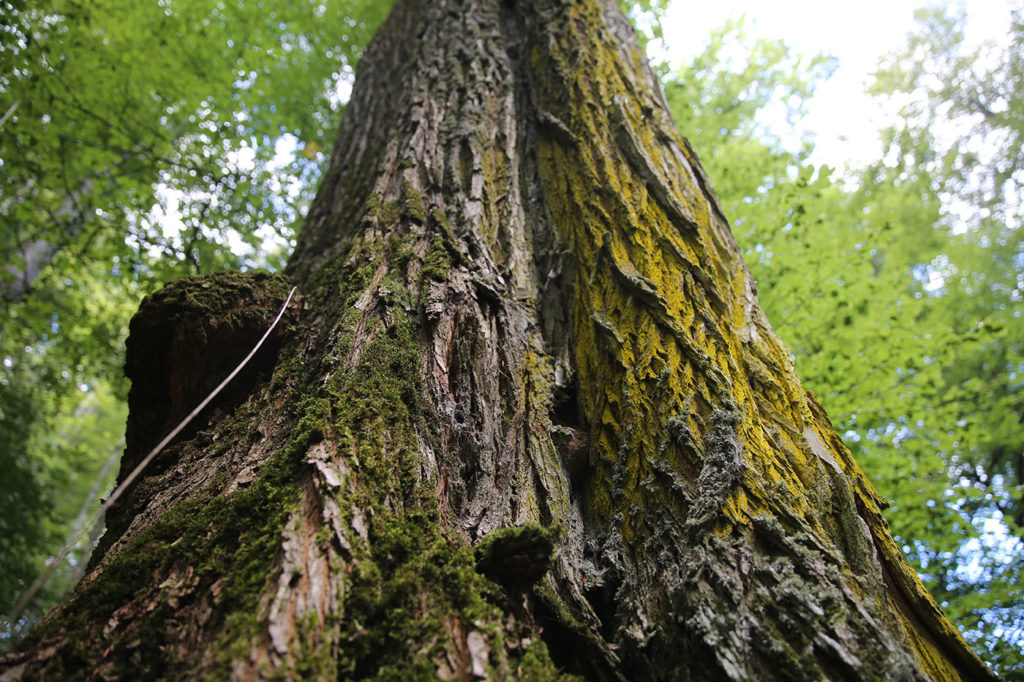Nature in Făgăraș Mountains: The Wych Elm in Romania

Romania-Insider.com is publishing a series of articles about wildlife in Romania, zooming in on the wild animal and plant species in the Fagaras Mountains area. This editorial series is sponsored by the Foundation Conservation Carpathia.
This January, a part of elm trees in Buzău’s Crâng Forest, in eastern Romania, were cut down after the local Forestry Department (Direcţia Silvică) confirmed that they were infected with the Dutch Elm Diseases (DED). It is another instance of the DED damaging the local elm population and of its virulent outcome. The felling of the infected trees can slow the spread of the disease but no effective cure is available, leaving the elm completely vulnerable.
The disease impacts all of the three species of elm that are present in Europe, where the tree is native to most countries and covers a wide range. These are the European white elm (Ulmus laevis Pall.) with a more southern range, the wych elm (Ulmus glabra Huds.) with a more northern range, also present in Romania, and the field elm (Ulmus minor Mill.), which has a more eastern range.
The first mentions of the DED in Romania date from 1922, around the same time that it started devastating the elm across Europe. It was also the first strain of the disease, known as Ophiostoma ulmi. It caused losses of 10-40% of elms in various European countries. Dutch phytopathologist Bea Schwarz identified the fungus causing the DED, hence the name of the disease. The second, far more aggressive strain, Ophiostoma novo-ulmi, was identified beginning with the 1970s. Millions of elms in Europe, Western Asia, and North America have died because of this second strain, still active today. In UK alone it is estimated that it killed over 25 million elms by the 1990s.
The international trade of timber and other products is believed to have made the intercontinental spread of the disease possible. It has since remained a lesson in the pitfalls of the transport of plants. In this respect, the EU has introduced in 2016 an overhaul of its plant health legislation, in place since 1977. The new rules are meant to focus particularly on the prevention of entry or spread of plant pests within the EU, and work on the conclusion that more resources are needed at an early age to prevent future harm to the agricultural production or the environment.
The DED is transmitted by the bark beetles of genus Scolytus or throughout root connections. With an infected tree, parts of its foliage begin to yellow, and later turn brown and fall. Affected shoots die back from the tip, and the twigs sometimes turn down to form ‘shepherds' crooks’. Since the disease is a progressive one, an infected tree can show a mixture of healthy foliage, yellow or brown foliage, and defoliated shoots. When twigs from the affected part of the tree are cross sectioned, they will show dark brown spots in the outer wood, often enough to form a ring. Young trees can be killed by the disease in as little as a few weeks.
It is a dramatic alteration of a tree that can grow an open and broad crown. While the field elm (Ulmus minor) grows to about 20 meters, the wych elm (Ulmus glabra) is a much taller tree and can reach up to 40 meters. The European elms are a part of cool mixed broad-leaved forests, and they prefer water- and nutrient-rich soils. They are distributed principally near rivers and streams or on floodplains.
 This wych elm in the project area of the Carpathia Foundation is estimated to be 400 years old. It too is under threat from the DED.
This wych elm in the project area of the Carpathia Foundation is estimated to be 400 years old. It too is under threat from the DED.Because of its ability to withstand moist soils, the wych elm helps in watershed protection and soil stabilization, while European elms may help to mitigate soil erosion by water even where intense precipitation occurs. In the Mediterranean regions, the latter has been used since ancient Greek times as a support for grapevines. According to some accounts, the elm, alongside the oak, was used in the wooden piles deployed in the construction of the foundation of the houses built in Venice. Because of its resistance to water, it was also used to make water pipes. In England, elm pipes were used until the 1700s. The elm wood has also been used to make boats and boat parts, but also furniture, floorboards or wheel hubs.
Many birds feed on the elm seeds and the leaves provide food for the caterpillars of many moths. In the UK, the caterpillars of the white letter hairstreak butterfly, which also feed on elms, have declined dramatically since the Dutch elm disease arrived in the country.
Locally, the wych elm can be found in mixed forests alongside the ash, the elder or the sycamore. Together they make a specific habitat that is now threatened as the elm disappears and is no longer replaced. Spruce mono-cultures are often planted instead, very sought after as timber in construction. And with it, the diversity of the local flora withers.
Sources:
Caudullo, G., de Rigo, D., 2016. Ulmus - elms in Europe: distribution, habitat, usage and threats. In: San-Miguel-Ayanz, J., de Rigo, D., Caudullo, G., Houston Durrant, T., Mauri, A. (Eds.), European Atlas of Forest Tree Species. Publications Office EU, Luxembourg
Petrescu, M., Poleac Dițu. El., Cucuianu E. Boala uscării ulmului în R.P.R., Editura Silvică, Vol. 23 (2), 1963, www.editurasilvica.ro
Christoph Promberger, Foundation Conservation Carpathia
Buzău: Ulmii din Pădurea Crâng, afectați de o ciupercă; Direcția Silvică a fost nevoită să taie o parte dintre aceștia, www.agerpres.ro.
Schlamp, Hans-Jürgen, Venice's Eternal Battle against Water in Spiegel Online. Published June 15, 2012
Dutch elm disease (Ophiostoma novo-ulmi), Forestry Commission, UK, www.forestry.gov.uk
Ophiostoma novo-ulmi (Dutch elm disease) in Invasive Species Compendium, www.cabi.org
Elm, wych (Ulmus glabra) in British Trees, Native Trees, Woodland Trust, www.woodlandtrust.org.uk
New Plant Health Regulation: stringent rules for a better protection from plant pests, European Commission Factsheet, Published December 13, 2016, europa.eu
Elm water pipe, England, 1401-1600, Brought to Life Science Museum, broughttolife.sciencemuseum.org.uk
(Opening photo: Tom Elm/ Wikipedia)
editor@romania-insider.com
This article is part of the “Nature in the Făgăraș Mountains” editorial series, currently sponsored by Foundation Conservation Carpathia.












